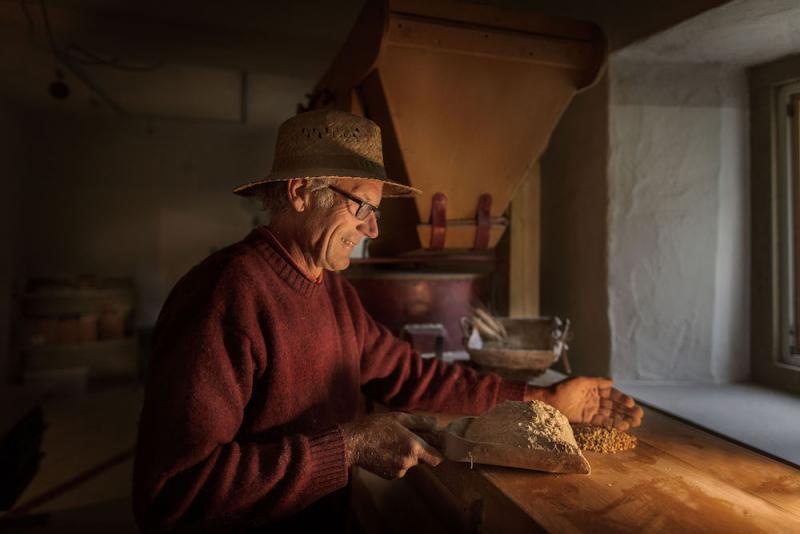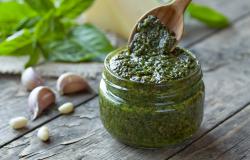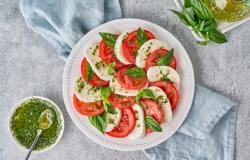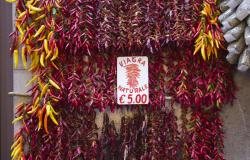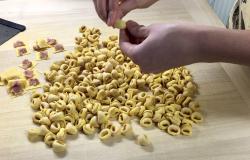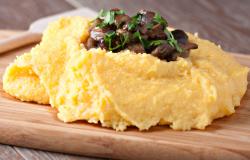Italy’s breads are as varied as its pastas, wines, and cheeses, with some 350 officially recognized types happily consumed in the country’s 20 regions reaching from the rugged mountain villages of the north to the seaside hamlets of Sicily. The Trentino Alto Adige provinces are particularly rich in bread choices, blending both Italian and Austrian baking traditions (the area was long part of the Austro-Hungarian empire) to offer an enormous range of pane and brot—the area around Bolzano alone produces between 60 and 100 different breads—many of which are only available locally.
Politics and geography played big roles in determining what got produced and how—breads rely more on Germanic baking traditions the farther north you go; are generally darker thanks to the prevalent use of rye and wheat, which can be grown at high altitudes The breads tend to be rural in origin, with recipes developed by farming communities over centuries. The mountainous terrain contributed to the enormous variety you find today. Because travel was difficult in Alpine towns, farmers developed their own versions of grain breads, with many recipes surviving to the present. The area is also known for its crispy, dried breads. For centuries bread was baked only a few times a year and had to last, often for an entire winter. Recipes with a high rye content (the more rye a bread has the longer it will last) became essential; devising methods to dry the loaves for months-long storage was critical for survival.

Photo credit (top and above): Fototeca Trentino Sviluppo s.p.a foto di daniele lira
The bread traditions of the South Tyrol are an important part of its legacy and regional groups are working to ensure their survival. There are strict guidelines to follow for a bread to be classified as an authentic regional product with a Qualitat Südtirol seal. 3/4 of the grain used must be locally grown and come from designated farms in specific valleys (Eisacktal, Pustertal, Vinschgau).The breads also must be preservative free, contain a mix of specific types of flour and spices, and be prepared with natural raising agents or home-made sour dough. To help encourage the growth of grains in the South Tyrol (the number of acres devoted to these crops shrunk from 15,000 to 150 hectars over the last five decades), the Regiokorn project funded by the ESF (European Social Fund) helps associations and farmers foster new relationships with producers, mills and bakers.
While you are likely to happen upon many hyper-local breads when traveling in the Trentino Alto Adige, here’s a guide to nine of the most popular types you’ll find in the area.

Photo credit: Fototeca Trentino Sviluppo s.p.a foto di daniele lira
Fastenbrezel
These twisty-shaped, salted treats were long a Lenten meranda or snack as they were baked with the simplest ingredients—only flour and water. Their exact origins may be lost to history, but it is believed they date to the 7th century when monks in Northern Italy created them, shaping the dough to represent hands crossed in prayer (the three holes of the pretzel representing the Holy Trinity). They were introduced to the US in the 19th century by German immigrants and versions of the brezel are ubiquitous street food in New York City today.

Fastenbretzel, By Manuela Paki-Costa (Own work) via Wikimedia Commons
Fruchtbrot
Apfelbrot, typical

Closeup of Austrian poppy seed strudel (Mohnstrudel) and dried pear fruit cake bread (Kletzenbrot) in South Tyrol
Osterbrot
South Tyrol Easter bread is also known as Pane di Pasqua or Forchaz (from the Ladin word for foccacia). The anise-flavored cake is usually prepared on Good Friday and presented on Easter to godchildren under 14 in the shape of a rabbit (for boys) or hen (for girls), often with a money gift placed inside.
Laugen
This shiny bread comes in loaf, baguette or roll size (panini bretzel) and has a soft pretzel flavor.

Rustic laugen rolls with a knuckle of pork and salad
Pane Scuro di Segale (dark rye bread)
Available throughout the region, pane scuro, also called pane nero, will differ depending on locale and the herbs and seeds grown or readily available in the immediate region. For example, the Val Badia version contains a mix of seeds (among them flax, sunflower, and pumpkin); in Bolzano the local pane scuro is made with four different flours—in addition to the typical rye and wheat, barley and oat flours are added to the mix.

Pane Scuro di Segale (dark rye bread) covered in sunflower seeds
Paarlbrot
This sourdough rye bread from the Vinschgau/Venosta valley dates from the 13th century when it was made in the Monte Maria Benedictine Abbey in Burgusio. Designed for a long shelf life, paarlbrot is a flat double loaf cooked in a rounded heart shape and seasoned with cumin and fenugreek among other seeds and herbs. It is often eaten with cheese and sausages.

Traditional Vinschger Paarl
Pusterer Breatl
A classic sourdough rye and wheat bread from the Pustertal Valley, close to the Austrian border, it is rich in spices, among them fenugreek, cumin, fennel and coriander. Shaped as a rounded loaf, Pusterer Breatl is best eaten a day or two after cooking.
Schüttelbrot
This crisp flat bread, also known as pane scosso, is made with rye flour and seasoned with caraway, aniseed, fennel and coriander. Because its dough dried and hardened fast after baking, Schülttelbrot, which means “shaken bread” (from the method used to shape the dough), could be stored for an entire winter. Today Schüttelbrot is a popular snack bread served with cheeses, Speck and red wine.
 Schülttelbrot, By Tkarcher (Own work) via Wikimedia Commons
Schülttelbrot, By Tkarcher (Own work) via Wikimedia Commons
Vinschgauer Struzan
A horse-shoe shaped rye and wheat bread from the Val Venosta baked with some of the typical regional spices like aniseed and fenugreek, Vinschgauer Struzan also has versions that include raisins and figs.

Vinschgauer Struzan
Where to buy
suedtirolerland.it/ has a list of organically made and farmhouse produced bread. Many of the farms grow and mill their own grains. Other sources for regional bread include Panific
If you are in the South Tyrol in the early fall, head to the Bread and Strudel Market in Bressanone/Brixen. A variety of the region’s famous breads and strudels are on offer during the event, as well as historical and baking presentations. For more information: info@brixen.org
Love this article? You might like to check out this recipe for a classic staple from Trentino, the Tyrolese Canederli or this local artisan's traditional wooden toys that help your kids hone their inner engineer.
